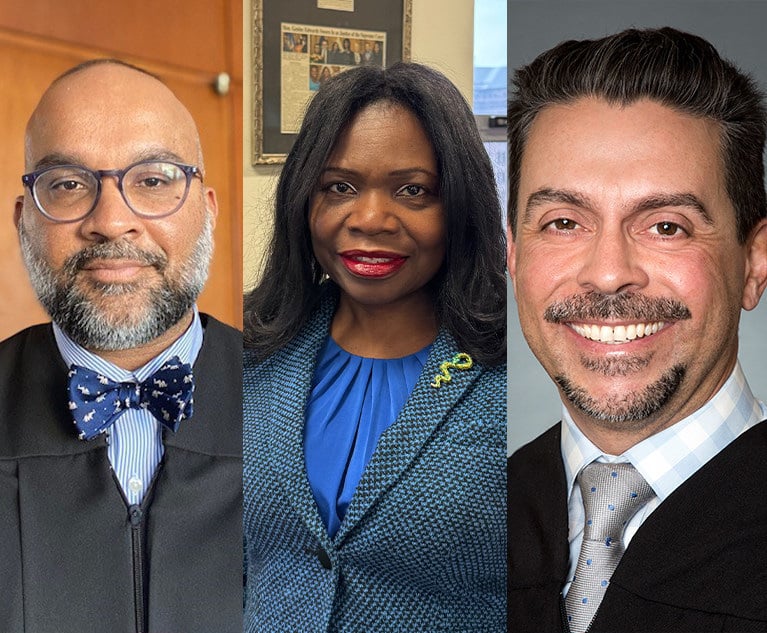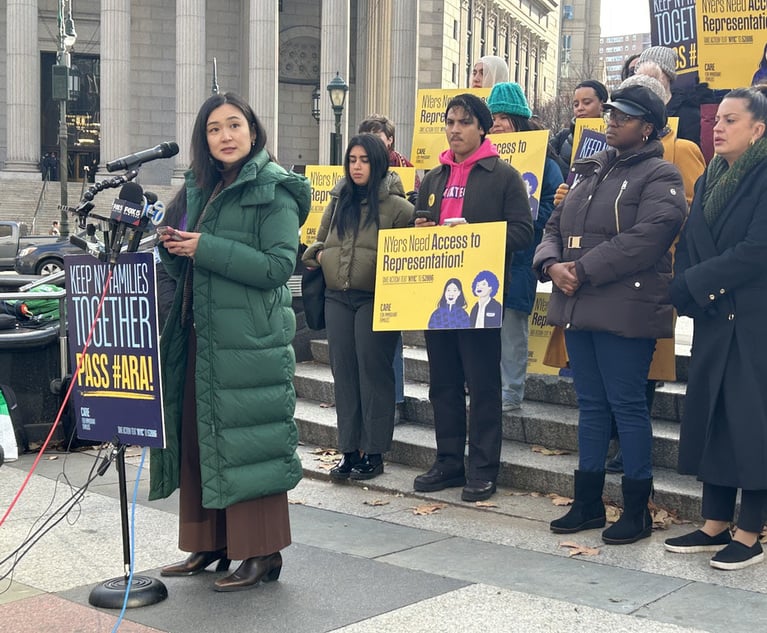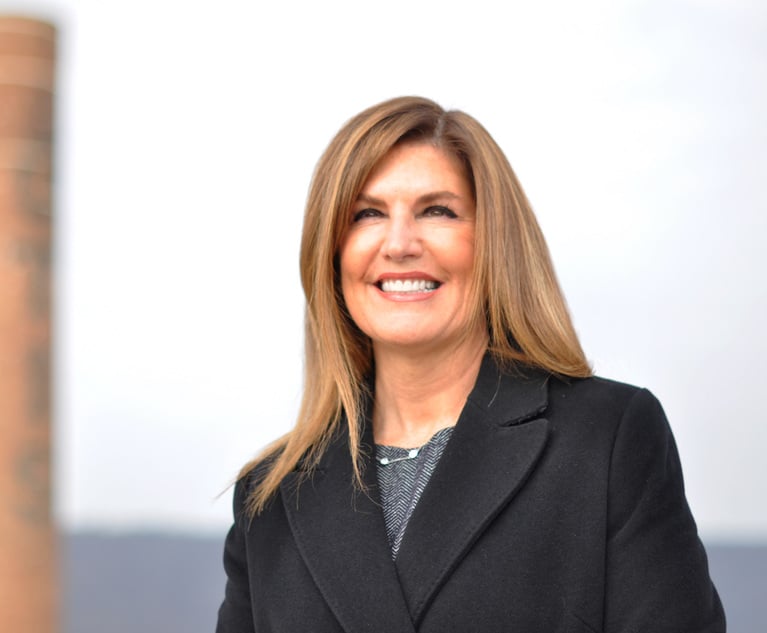 Ilann Margalit Maazel
Ilann Margalit MaazelSuits for Sexual Abuse: Deadlines and Statutes of Limitations
The New York State Legislature recently passed a well-publicized law extending the statute of limitations for certain abuse victims: the Child Victims Act. In his Civil Rights Litigation column, Ilann M. Maazel reviews that act, and more generally, how long victims of sexual abuse, misconduct, and discrimination have to bring claims under New York and federal law.
March 22, 2019 at 02:30 PM
7 minute read
And now for a column about statutes of limitations. Though the topic may seem dry, the statute of limitations is often the single most important legal concept for victims of sexual abuse, other abuse, or any unlawful conduct. How often have we told a potential client: “you would have had a great case if you had only come to us 1, 10, or X years ago”?
The New York State Legislature recently passed a well-publicized law extending the statute of limitations for certain abuse victims: the Child Victims Act. We will review that act, and more generally, how long victims of sexual abuse, misconduct, and discrimination have to bring claims under New York and federal law.
But before we do so: a friendly reminder. This column is not legal advice and I am not your lawyer. If you have a potential claim, contact a lawyer and get advice concerning your particular claim.
The Child Victims Act
The Child Victims Act (CVA) applies to child victims of sexual abuse in New York State. The offense must have been a sexual offense, as further defined in the CVA. The CVA does not apply to non-sexual physical abuse. The victim must have been under 18 years old. The CVA does not apply to victims 18 years old or over.
With respect to civil claims, the CVA first extends the statute of limitations until the victim is 55 years old. This is a permanent change. If you are 54 years old now, and suffered sexual abuse as a child, you can bring a suit until you are 55. If you are 24 now, you can bring a suit for childhood sexual abuse until you are 55. CPLR 208(b).
Second, the CVA provides a one-time, one-year window for any child sex abuse victim to bring suit. If you are 99 years old and suffered sexual abuse as a child in New York State, the window applies. CPLR 214-g. The one-year window begins “not earlier than six months after, and not later than one year and six months after the effective date” of the CVA, which was signed into law on Feb. 14, 2019. Id.
Third, the CVA wipes out the notice of claim requirement for victims of child sex abuse victims, past, present and future. The 90-day notice of claim requirement for suits against municipalities, counties, towns, and school districts is gone. A similar requirement to file a notice of intent to file claim for suits against New York State in the Court of Claims is also gone.
(Author's note: the legislature should eliminate the notice of claim requirement for all children, not just victims of childhood sexual abuse. Given that the CPLR already tolls the statute of limitations until age 18 for all state law claims, there is no logical reason municipalities should be able to impose a 90-day notice of claim requirement as a condition precedent to filing suit.)
Fourth, the one-time, one-year window applies even where the plaintiff previously filed a lawsuit later dismissed on statutes of limitations, notice of claim, or notice of intent to file claim grounds. Those cases can now be revived.
Finally, the CVA applies “against every party whose intentional or negligent acts or omissions are alleged to have resulted in the commission” of sexual abuse against children. The CVA applies not only to the sexual abuser. It also applies to every person and institution whose negligence enabled the abuser's misconduct. Now we understand why so many institutions fought enactment of this legislation for decades.
Sexual Abuse of Adults
Cases alleging sexual abuse of adults have a range of deadlines, depending on the claim. Under federal law, claims for sex trafficking of adults by “means of force, threats of force, fraud, [or] coercion” must be brought within 10 years. 18 U.S.C. §§1591, 1595. In New York City, the Victims of Gender-Motivated Violence Protection Act provides a seven-year of statute of limitations to “any person claiming to be injured by an individual who commits a crime of violence motivated by gender.” See Ilann M. Maazel, “The New York City Victims of Gender-Motivated Violence Protection Act,” New York Law Journal, Dec. 18, 2018. These claims (i) must arise out of conduct in New York City; (ii) apply only to the person(s) who themselves committed the crime of violence, not to others who negligently enabled them; and (iii) include an element of gender-motivation.
New York State provides a five-year statute of limitations to bring a claim “for physical, psychological or other injury or condition suffered by a person as a result of…rape in the first degree as defined in section 130.35 of the penal law, or criminal sexual act in the first degree as defined in section 130.50 of the penal law, or aggravated sexual abuse in the first degree as defined in section 130.70 of the penal law.” CPLR 213-c.
However, “[w]henever it is shown that a criminal action against the same defendant has been commenced” arising from the same sexual misconduct, “the plaintiff shall have at least five years from the termination of the criminal action…in which to commence the civil action[.]” CPLR 215(8)(b). Again, this sexual assault claim can only be brought against the perpetrator, not others whose negligence may have enabled the perpetrator.
Then there is New York Civil Rights Law §79-n, a virtually unknown but potentially powerful civil rights statute. It provides: “Any person who intentionally selects a person or property for harm or causes damage to the property of another or causes physical injury or death to another in whole or in substantial part because of a belief or perception regarding the race, color, national origin, ancestry, gender, religion, religious practice, age, disability or sexual orientation of a person…shall be liable, in a civil action or proceeding maintained by such individual or group of individuals, for injunctive relief, damages, or any other appropriate relief in law or equity.” The law was meant to “establish[] a civil remedy for victims of bias-related violence or intimidation for deprivation of a civil liberty, property damage, injury or death motivated by race, religion, national origin, sex, disability, age or sexual orientation to recover actual damages, injunctive relief or other appropriate remedy; includes attorneys fees.” New York Assembly Bill Summary, 2009 A.B. 529 (April 29, 2009) (cited in Zhang Jingrong v. Chinese Anti-Cult World All., 311 F. Supp. 3d 514, 555 (E.D.N.Y. 2018)). The statute of limitations is three years. CPLR 214(2).
Sexual Discrimination In NYS
New York State provides a three-year statute of limitations to file a lawsuit for sexual discrimination in employment, housing, education, credit, and public accommodations. N.Y. Exec. Law §296; CPLR 214(2). Sexual discrimination of course includes sexual abuse and harassment, but it more broadly covers any discriminatory conduct on the basis of sex.
New York City also provides a three-year statute of limitations to file a lawsuit for sexual discrimination in employment, housing, and public accommodations. N.Y.C. Admin. Code §8-101, 8-502(d).
Other Claims
For more minor assaults and batteries that may be sex-related, the regular one-year statute of limitations for intentional torts applies in New York State. CPLR 215(3).
Finally, to assert a federal employment sex discrimination claim, claimants must file with the Equal Employment Opportunity Commission within a mere 300 days of the misconduct, and then receive a “notice of right to sue” before filing in federal court.
Conclusion
Know your statutes of limitations. It may be the difference between a great case and no case at all.
Ilann M. Maazel is a partner at Emery Celli Brinckerhoff & Abady.
This content has been archived. It is available through our partners, LexisNexis® and Bloomberg Law.
To view this content, please continue to their sites.
Not a Lexis Subscriber?
Subscribe Now
Not a Bloomberg Law Subscriber?
Subscribe Now
NOT FOR REPRINT
© 2024 ALM Global, LLC, All Rights Reserved. Request academic re-use from www.copyright.com. All other uses, submit a request to [email protected]. For more information visit Asset & Logo Licensing.
You Might Like
View All
Court System Names New Administrative Judges for New York City Courts in Leadership Shakeup
3 minute read

Retired Judge Susan Cacace Elected Westchester DA in Win for Democrats

In Eric Adams Case and Other Corruption Matters, Prosecutors Seem Bent on Pushing Boundaries of Their Already Awesome Power
5 minute readTrending Stories
- 1Call for Nominations: Elite Trial Lawyers 2025
- 2Senate Judiciary Dems Release Report on Supreme Court Ethics
- 3Senate Confirms Last 2 of Biden's California Judicial Nominees
- 4Morrison & Foerster Doles Out Year-End and Special Bonuses, Raises Base Compensation for Associates
- 5Tom Girardi to Surrender to Federal Authorities on Jan. 7
Who Got The Work
Michael G. Bongiorno, Andrew Scott Dulberg and Elizabeth E. Driscoll from Wilmer Cutler Pickering Hale and Dorr have stepped in to represent Symbotic Inc., an A.I.-enabled technology platform that focuses on increasing supply chain efficiency, and other defendants in a pending shareholder derivative lawsuit. The case, filed Oct. 2 in Massachusetts District Court by the Brown Law Firm on behalf of Stephen Austen, accuses certain officers and directors of misleading investors in regard to Symbotic's potential for margin growth by failing to disclose that the company was not equipped to timely deploy its systems or manage expenses through project delays. The case, assigned to U.S. District Judge Nathaniel M. Gorton, is 1:24-cv-12522, Austen v. Cohen et al.
Who Got The Work
Edmund Polubinski and Marie Killmond of Davis Polk & Wardwell have entered appearances for data platform software development company MongoDB and other defendants in a pending shareholder derivative lawsuit. The action, filed Oct. 7 in New York Southern District Court by the Brown Law Firm, accuses the company's directors and/or officers of falsely expressing confidence in the company’s restructuring of its sales incentive plan and downplaying the severity of decreases in its upfront commitments. The case is 1:24-cv-07594, Roy v. Ittycheria et al.
Who Got The Work
Amy O. Bruchs and Kurt F. Ellison of Michael Best & Friedrich have entered appearances for Epic Systems Corp. in a pending employment discrimination lawsuit. The suit was filed Sept. 7 in Wisconsin Western District Court by Levine Eisberner LLC and Siri & Glimstad on behalf of a project manager who claims that he was wrongfully terminated after applying for a religious exemption to the defendant's COVID-19 vaccine mandate. The case, assigned to U.S. Magistrate Judge Anita Marie Boor, is 3:24-cv-00630, Secker, Nathan v. Epic Systems Corporation.
Who Got The Work
David X. Sullivan, Thomas J. Finn and Gregory A. Hall from McCarter & English have entered appearances for Sunrun Installation Services in a pending civil rights lawsuit. The complaint was filed Sept. 4 in Connecticut District Court by attorney Robert M. Berke on behalf of former employee George Edward Steins, who was arrested and charged with employing an unregistered home improvement salesperson. The complaint alleges that had Sunrun informed the Connecticut Department of Consumer Protection that the plaintiff's employment had ended in 2017 and that he no longer held Sunrun's home improvement contractor license, he would not have been hit with charges, which were dismissed in May 2024. The case, assigned to U.S. District Judge Jeffrey A. Meyer, is 3:24-cv-01423, Steins v. Sunrun, Inc. et al.
Who Got The Work
Greenberg Traurig shareholder Joshua L. Raskin has entered an appearance for boohoo.com UK Ltd. in a pending patent infringement lawsuit. The suit, filed Sept. 3 in Texas Eastern District Court by Rozier Hardt McDonough on behalf of Alto Dynamics, asserts five patents related to an online shopping platform. The case, assigned to U.S. District Judge Rodney Gilstrap, is 2:24-cv-00719, Alto Dynamics, LLC v. boohoo.com UK Limited.
Featured Firms
Law Offices of Gary Martin Hays & Associates, P.C.
(470) 294-1674
Law Offices of Mark E. Salomone
(857) 444-6468
Smith & Hassler
(713) 739-1250






